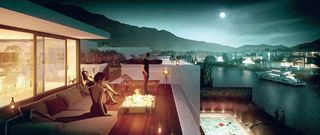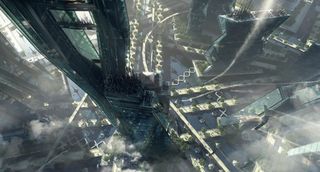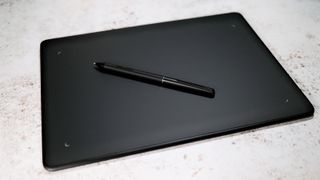The secrets of an impressive 3D visualisation portfolio
Ronen Berkerman picks out his favourite portfolio and reveals his top tips for showcasing your own visualisation work.

Rafał Barnaś' work is unique, vivid, highly emotive and tells a story. He is very talented and at the same time very humble, giving lots of respect to his clients and the subject matter he so masterfully takes care of. I like the fact he always approaches a project free from any predetermined techniques in mind for executing it.
For him, every topic with the right approach and way of thinking, can evolve into an interesting project at the finish line. The best example of this is his Biotherm Radiators project – who thought this subject could be so exciting!
Looking at Rafał's raw renders clearly shows where his attention lays. In some case he even skips creating a 3D model and render, going with a physical scale model or just some collaged image scraps as a starting point, doing all of it by hand.
The process is more of a conceptual one, cinematic even, with Rafał as the director setting the tone and mood using smart composition, bold and contrasting colours, with strong lighting leveraging the free-from painterly approach to its fullest. He even takes it a step forward, creating an animation, based on the images, for almost each one of his projects.

I'm fascinated by what he accomplishes by departing from 3D and photorealism so early on in the process, and the levels of creativity he manages to reach in the execution and presentation of his work.
5 pro tips for a killer visualisation portfolio
01. Don't get caught up with details
If there is one thing I've learned from Rafał is how powerful a simple sketch can be. Go back to basics and lock in your ideas with the most basic of tools you are comfortable with.
02. Photoreal is not a must
It is mostly a preference and a specific requirement outside the core architecture visualisation stream. Focus on the subject and what you want to convey first.
Get the Creative Bloq Newsletter
Daily design news, reviews, how-tos and more, as picked by the editors.

03. Let your imagination lead
Try to express your own approach to the subject and how you envision the process all the way to the final images. Clients will respect you more for that and you'll probably be a lot happier with the autonomy you have set for yourself as well as with the end results going directly to your portfolio.

04. Don't forget the real thing
You visualise architecture – so visit it and experience it as much as possible under various light conditions and different seasons. Take pictures and feel the materials that make up a place. There is no better schooling.
05. Share your work and get feedback
Don't be shy. After almost five years of blogging, I'm still amazed to see how many artists do not share their work. Just state it is up for critique and learn from the feedback you get.

Words: Ronen Berkerman
Ronen is an architectural visualisation artist based in Tel-Aviv, Israel. Starting as a freelancer in 2002, he founded Polytown Media in 2005. He is well known for his Architectural Visualization blog. This article originally appeared in 3D World issue 181.

Thank you for reading 5 articles this month* Join now for unlimited access
Enjoy your first month for just £1 / $1 / €1
*Read 5 free articles per month without a subscription

Join now for unlimited access
Try first month for just £1 / $1 / €1
The Creative Bloq team is made up of a group of design fans, and has changed and evolved since Creative Bloq began back in 2012. The current website team consists of eight full-time members of staff: Editor Georgia Coggan, Deputy Editor Rosie Hilder, Ecommerce Editor Beren Neale, Senior News Editor Daniel Piper, Editor, Digital Art and 3D Ian Dean, Tech Reviews Editor Erlingur Einarsson and Ecommerce Writer Beth Nicholls and Staff Writer Natalie Fear, as well as a roster of freelancers from around the world. The 3D World and ImagineFX magazine teams also pitch in, ensuring that content from 3D World and ImagineFX is represented on Creative Bloq.




